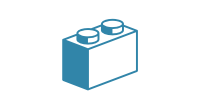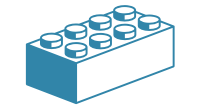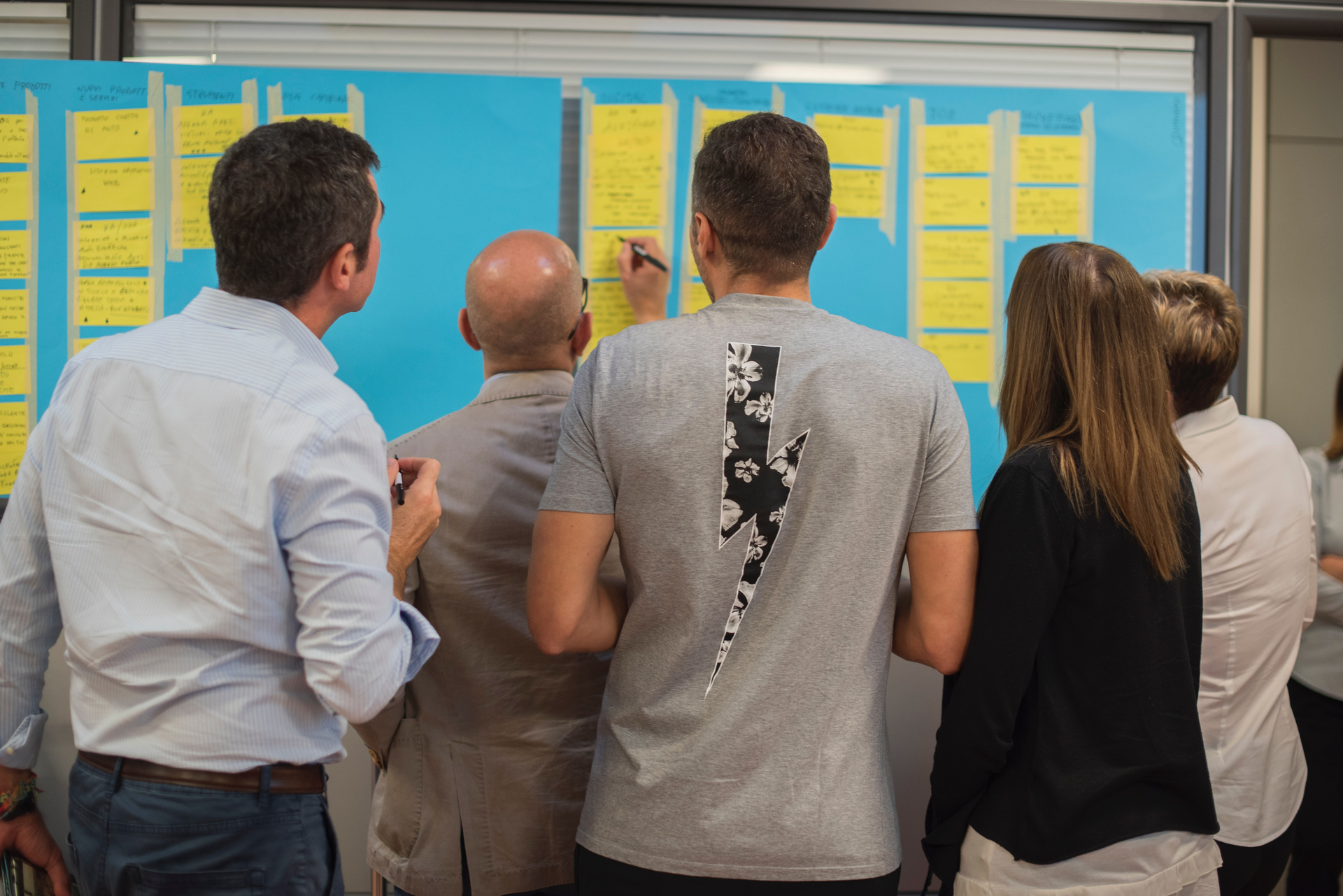Service Design Mission
Add a Service Designer to your team and launch your next big hit smoothly.
Jump to ↓
Packages • Overview of a Service Design Mission • FAQ
Side Support vs. Full Lead
Brows the following packages to determine what level of support is right for your team.
Light Project
Ideal for simple services that don't reinvent the wheel. You just want to make sure the dev prioritise the right User Stories.
Approximative no. of billable days
5 days
Medium Project
Ideal for projects involving a greater number of stakeholders with a delivery team that lack first hand data about users.
Approximative no. of billable days
9 days
Complex Project
Ideal if you're innovating in a new space, creating a state-of-the art service for customers you don't know intimately yet.
Approximative no. of billable days
16+ days
Mock agenda of a Light package:
Mock agenda of a Medium package:
Mock agenda of a Complex package:
✓
✓
✓
✓
Mini Kick-off (45 min)
Research:
1/2 day immersion with a customer-facing staff
Workshops:
4 x 2 hrs workshops
Deliverables:
1 Service Blueprint (pdf & editable)
1 Final Handover (presentation + Q&A)
✓
✓
✓
✓
✓
✓
Kick-off & onboarding (2.5 hrs)
Research:
1 day immersion with a customer-facing staff
1 day interviews with customers
Workshops:
7 x 2 hrs workshops
Deliverables:
1 Service Blueprint (pdf & editable)
2 Personae with corresponding Customer Journey maps
1 Final Handover (presentation + Q&A)
✓
✓
✓
✓
✓
✓
✓
✓
✓
✓
✓
Kick-off & onboarding (2.5 hrs)
Research:
1.5 day immersion with a customer-facing staff
4 day interviews with customers
Workshops:
12 x 2 hrs Workshops
1 Prioritisation Sprint (2 hrs workshop with dev) once blueprint has been validated
Deliverables:
1 Service Blueprint (pdf, editable & large print to onboard collaborators)
3 Personae with corresponding Customer Journey Maps
1 Change Roadmap (processes, training...)
1 Backlog a.k.a. development roadmap (Exhaustive list of Epics + exhaustive list of User Stories for 1 Epic)
2 Final Handover (presentation + Q&A)
Weekly office hours (1 hr per week during 5 weeks) Objective: challenge and debunk questions arising during service implementation
Not a fan of packages?
Every project is unique, let's see how we can best suit your needs.
Custom Project
Tell us more about your needs and the configuration of your company and we'll get back to you with a specific plan.
Overview of a Service Design Mission
What to expect from a Service Design collaboration.
Building a product or service with a Service Designer in the room is not so different — process-wise — from your usual agile routine, what differs, though, is the incredibly sharp focus we put on users from day 1.
Don't be mistaken: we take ROI, tech requirements and operational constraints very seriously. Our approach, however, consists in building and arranging these processes around a central vision of what the ideal user experience should look and feel like.
Processes are what will enable — or disable — an organisation to stage meaningful experiences for its users and staff, while turning a profit.
So, as much as we're people-centered — and we are —, let me tell you we're process freaks on steroids!
Let's break down the three main phases of a Service Design mission.
In order to align the different facets of your business (dev, marketing, operations, HR, compliance...) with the needs of the users we have, first and foremost, to understand what end users are experiencing.
User Research is performed "on the field", whether that means getting out of the building and speaking with actual customers or seating with support staff at a help desk or engaging in any sort of immersion and/or interview that can teach us what it feels to be on the receiving end of the service we're dealing with.
We're often presented with situations where there are multiple types of users interacting with several internal stakeholders: all of their needs have to be mapped and accounted for.
What is acceptable to users? What is not? What emotions do they go through at every step in the service delivery? Do they have the right information at the right time? Is their journey a smooth and comfortable ride or is it bumpy, filed with hesition and hard choices to make?
Once the project team has painted a clear picture of who the users are, we usually facilitate of a series of workshops involving collaborators from across the organisation — and sometimes customers too.
Together we maps a coherent vision of the ideal user experience (we use giant online whiteboards where to collaborate visually).
This crucial step in the design of the new service opens a dialogue about who the organisation and its people are striving to be, what level of service they're willing to bring to customers. Most importantly, it is an unexpected opportunity for collaborators from all seniority to have an open conversation about strategy: what services do we want to push, what services are actually generating most of the profit, what is the directions going forward, etc.
From here on, the focus shift to almost exclusively internal processes: how every single business line involved will interact to meet customer expectation and to lay the ground for the next piece in the puzzle?
This is a fascinating phase where, every single time, business leaders we work with watch in awe as their collaborators rethink their policies and processes and give birth in a matter of a few hours to a lighter, more agile, more meaningful and definitely more robust organisation.
Ultimately, all this knowledge is boiled down to a collection of User Stories, carefully crafted to maintain user centricity and nudge the developer team into keeping the end user brief at the top of their mind. At this time, developers are usually eager to start coding and understand perfectly the ins and outs of the service.
"I've never seen our people get on the same page that quickly! Putting the customer at the center of everything was really new to us, I haven't heard anyone try to defend its own interests. The level of commitment of everyone was astonishing, now we're all back the new plan."
– CEO, at a client firm in the Building Industry
Frequently asked questions
What is a Service Blueprint?
A Service Blueprint is a visual tool used to map out a user experience and all the steps the business takes to support it. Service Blueprints happen to be a great tool to get multidisciplinary teams working in the same direction, it's both a silo-breaker and a physical tool to instil user-centricity in organisations. Once started — either on an office wall or on an online whiteboard — it's hard to get collaborators to stop talking about customers and the level of care and service they'd like to be able to deliver them.
A Service Blueprint works a little bit like a map to the future state of the service you want to launch, displaying both the visible parts of your service (such as when a customer enters a store — physically or on a device) and the backstage interactions (such as when a sales person fills a contact information on the company ERP then assign a colleague to the next step).
More specifically it depicts your vision of the service from the surface (user) to the core (processes and tech invisible to the user) and takes into account the idiosyncrasies of your organisation (policies, legacy softwares, etc.) to makes sure all collaborators align their processes onto the new shared vision.
When you've completed your mission, do you drop the deliverables and run away?
I'm a terrible runner, but most of all, handovers are among my favorite moments in a project. Deliverables and final presentation are usually articulated around a Service Blueprint. We — the client, product team and various guests from across the organisation — usually sit around that rather large map detailing the architecture of the future service (see above) and start going through every aspect of the new organisation.
The energy in the room is always very special during handovers, a great mix of a sense of achievement and the vertigo of what's left to be done (a lot!). I love handovers!
Can you work remotely?
Workshops can be conducted online and/or onsite with different members of the organisation, ideally representing the different aspects of the business. Most importantly the product team must include several customer-facing staff.
User research... it depends on the topic and context. What must guide the choice of method is the ability to gather enough qualitative user data.
Is Service Design only relevant for B2C products ?
User research... it depends on the topic and context. What must guide the choice of method is the ability to gather enough qualitative user data.
Wait a second... Product or Service?
Same same... we tend to view everything, especially every product, as a service. The reason for that is that we're people focussed, not tech focussed, so even when working on a product (such as an app) we'll try to focus on the experience of using the product, a.k.a. the service it provides to the user. So you'll hear us say product and service interchangeably — daring, isn't it?
Baptiste Bachellerie Independent Service Designer
Copyright © 2021 BaptisteB All rights reserved.
No code 😍 know-how Build the same page (or a landing page for your MVP?!) with the following tool
TypeDream ↗️
Tally ↗️
Notion ↗️
Keynote ↗️






